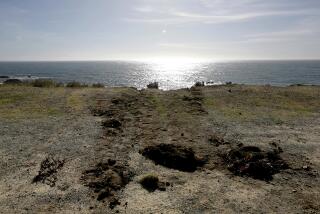Book Review : Disturbing New Study Looks at Incest’s Damaging Effects
- Share via
The Secret Trauma: Incest in the Lives of Girls and Women by Diana E. H. Russell (Basic: $24.95)
Sigmund Freud set the tone for the treatment of incest when he dismissed the subject as a female fantasy. As recently as 1979, keynote speaker LeRoy Schultz informed an audience at the first national conference on sexual abuse of children that some incest “may be either a positive, healthy experience, or at worst, neutral and dull.”
A “positive” or “neutral” experience? Almost never, says Diana E. H. Russell in her fascinating new book, “The Secret Trauma: Incest in the Lives of Girls and Women,” in which the Mills College sociology professor dissects data culled from a random survey conducted during the summer of 1978 of 930 San Francisco women.
The third book to come out of her study--the other two are “Rape in Marriage” and “Sexual Exploitation”--”The Secret Trauma” pulverizes popular myths surrounding incest and sets us straight about the scope and the nature of the abuse.
Russell’s most disturbing revelation is the extent of the abuse she uncovered. According to the author, 16% of the women interviewed had been sexually abused by a relative (mostly uncles, brothers, brothers-in-law or cousins) before age 18 (12% before age 14) and 4.5% by their fathers before age 18. Russell maintains that the best estimate of father-daughter incest before her study was 1%, and 4% to 12% for incest in general.
Some other startling findings to emerge from her survey: Uncles, not fathers or brothers, are the most common perpetrators; abuse is anything but a lower-class phenomenon, rather girls brought up in high-income homes are most often incest victims; stepfathers sexually abuse their stepdaughters seven times more than biological fathers; once a girl has been incestuously abused, she is more likely to be the target of subsequent sexual assaults; and Jewish and Asian girls are abused less often than those raised in Protestant or Catholic families.
Russell’s definition of incest is broad: “Any kind of exploitative sexual contact or attempted contact that occurred between relatives, no matter how distant the relationship, before the victim turned 18.” She did not include within her definition sex play between people whose ages were five years within each other if the victim did not consider the experience upsetting.
The sociologist cites long-term effects of this form of abuse, fear being the predominant one--fear about specific sex acts, fear for their own daughters’ sexual safety, and mistrust of all men. Asserts one woman who was molested by her stepfather: “It had a much greater effect on me than being raped by a stranger--someone you’ll never see again.”
“The Secret Trauma” offers first-person accounts from victims, a section on the composition of perpetrators, and one on the effect of incest on other family members, with an intriguing discussion of how mother-daughter relationships suffer as a result of father-daughter unions. This is not a light read for the layman but rather a scholarly study best suited for sociologists and mental health professionals; it is punctuated with percentages, charts, and tables.
There are problems with the survey that the author acknowledges, such as the high refusal rate of 36% and the lack of follow-up questions on the part of a few interviewers, which affects the analysis of some data. The book is wanting on preventive measures.
Yet what Russell is able to accomplish is most remarkable. With statistics and facts, not sensational stories, the author expands our understanding of the scope of the problem.


